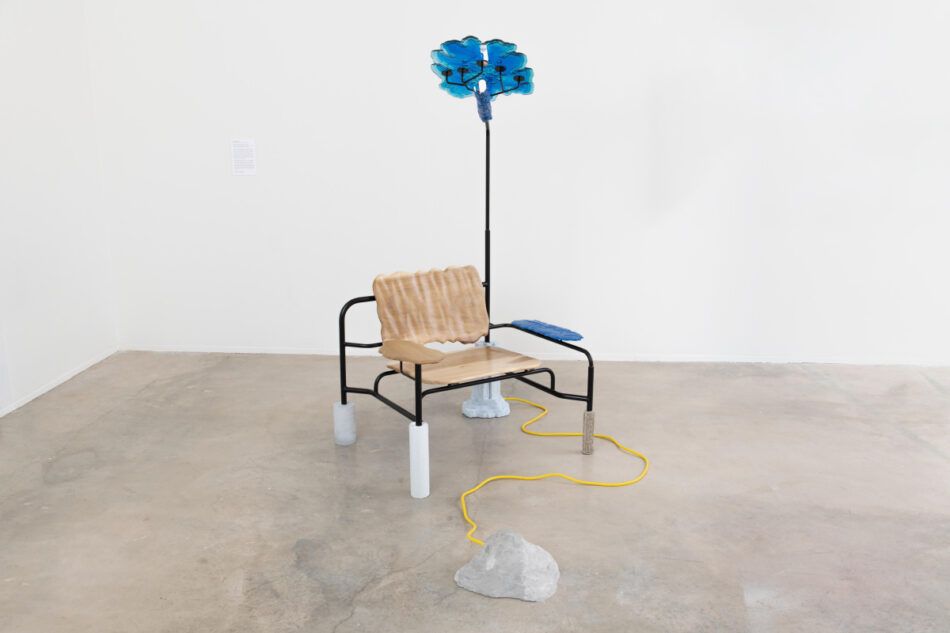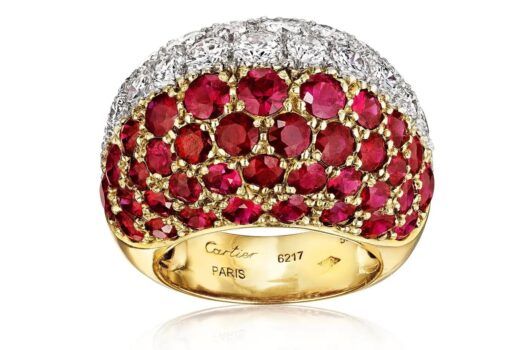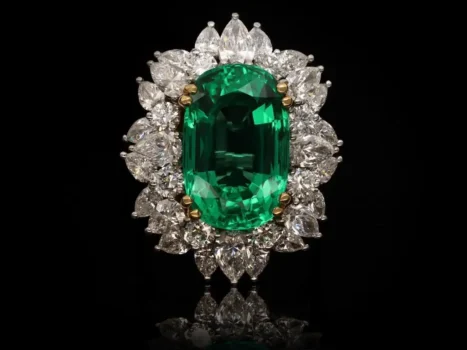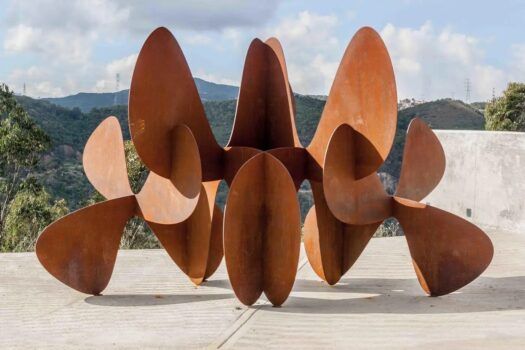At first glance, Nicholas Tilma’s Habitat lounger looks like an artifact from the future. Part monolithic throne, part biomorphic specimen, it defies easy categorization. A brutalist concrete base gives way to a powder-coated-steel armature, which in turn holds a hand-sculpted wood backrest and an amoeba-like epoxy-resin lamp. It is a striking, confounding and utterly captivating amalgamation — a chair that functions as a complete, self-contained habitat.
This all-in-one cocoon effect was precisely Tilma’s goal. The undulating backrest, carved from poplar, evokes tree bark, creating a comforting tactile sensation that the Detroit-based designer cheekily compares to “how a bear would feel rubbing its back against a tree.”
The lounger is a study in symbiotic tension. Industrial materials provide its structure, but its forms exude whimsy. Tilma’s inspirations are a delightful clash: He’s mixing the oak leaves and frozen puddles of the natural world with the playgrounds, zoo enclosures and neon-colored fish-tank coral of the manufactured one. This artifice, neighboring the real, is key to the strange yet delightful design.
Tilma was also inspired by the idea of a world where nature is reclaiming the man-made environment. Living in Detroit, he sees this reclamation beginning all around him — in, for example, wire fences overtaken by vines, reminding us that nature reigns supreme. He is ahead of the curve, imagining how future humans will memorialize a tree when their main reference isn’t a forest but a plastic replica on a playground.
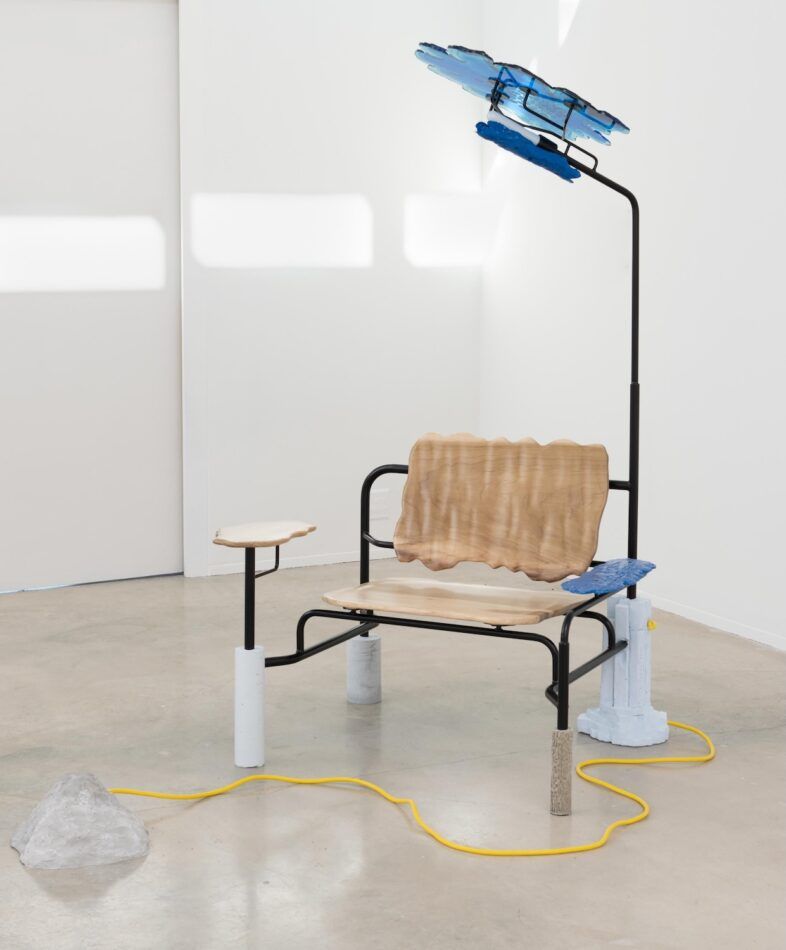
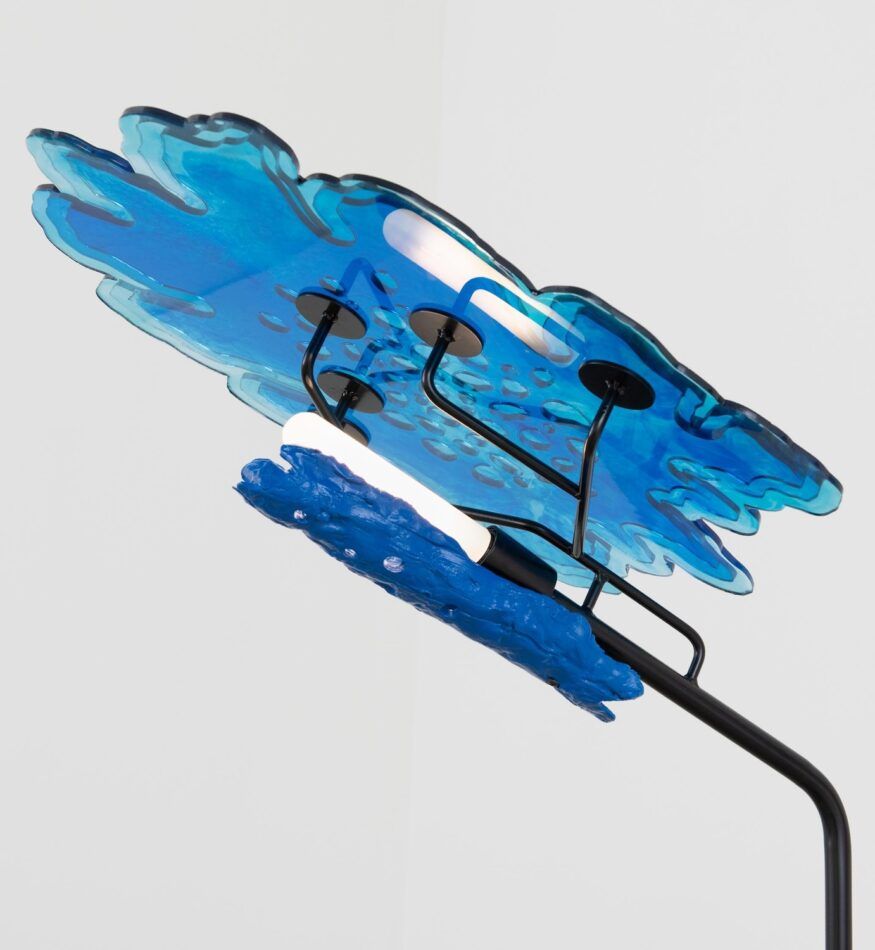
Created as his MFA thesis work for the Cranbrook Academy of Art, the Habitat lounger brings together Tilma’s woodworking, metal-fabrication and casting skills. Wonderfully weird and boundary-pushing, it fits right in at DUDD HAUS, which represents him. The Philadelphia-based collective, co-founded by Chris Held and Charles Constantine, is committed to creating, as Tilma puts it, a “weird space for people that really push the boundaries of design.”
DUDD HAUS doesn’t operate like a traditional gallery. Tilma was first drawn to its shows celebrating the kind of work he loves — objects that are serious craft but don’t take themselves too seriously. For its designers, the collective functions as a crucial support system. Tilma highlights how it enables creators to build sustainable careers outside the mainstream by fostering camaraderie among them, helping them get press coverage, facilitating curator introductions and offering lectures on the business of design.
He knows, of course, that his lounger won’t solve climate change. Instead, he says, it’s a way to “test different futures,” a playful meditation on an unknowable world. It’s an approach that trades doom and gloom for a childlike wonder, tackling our deepest anxieties with imagination.
